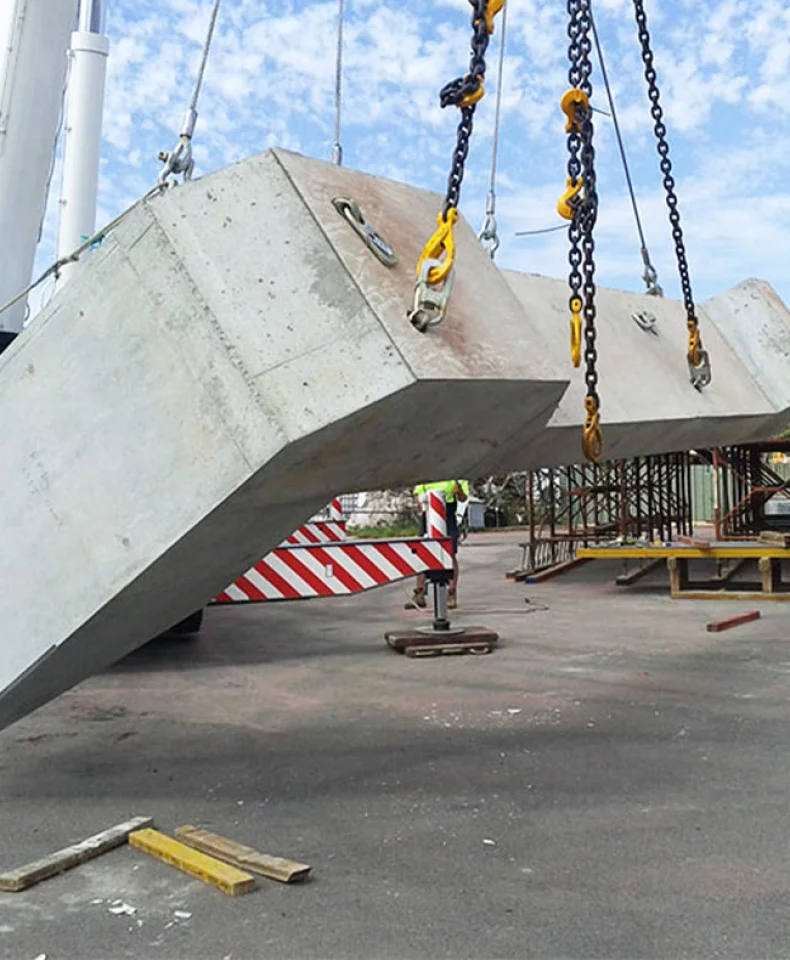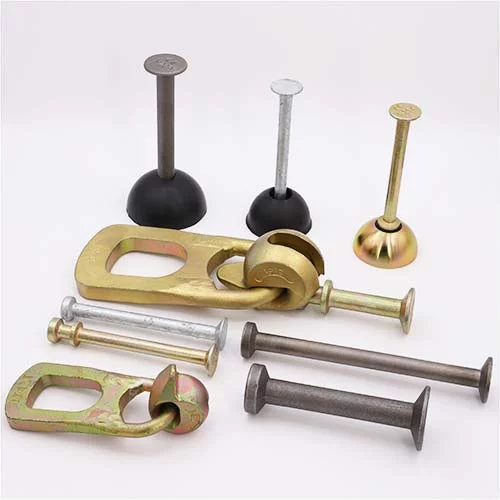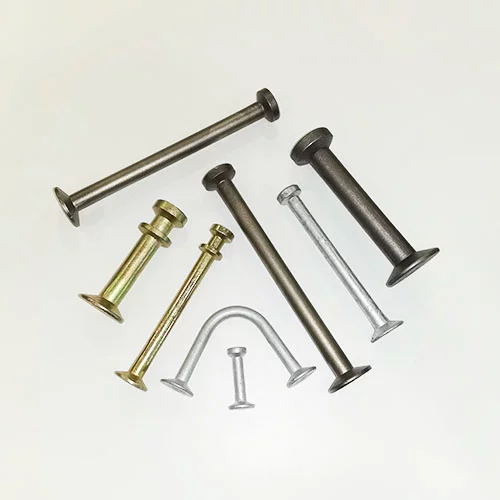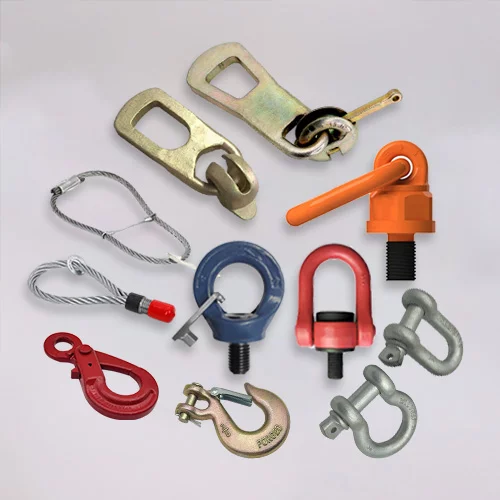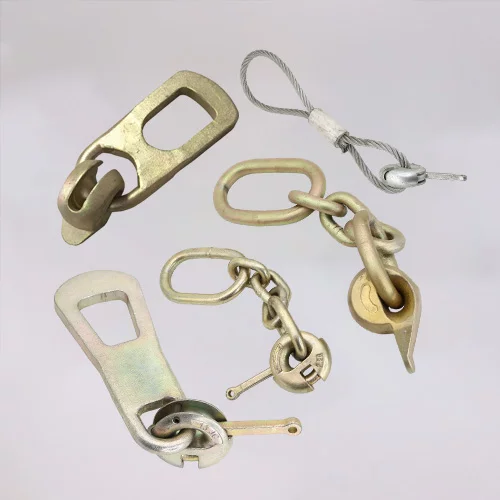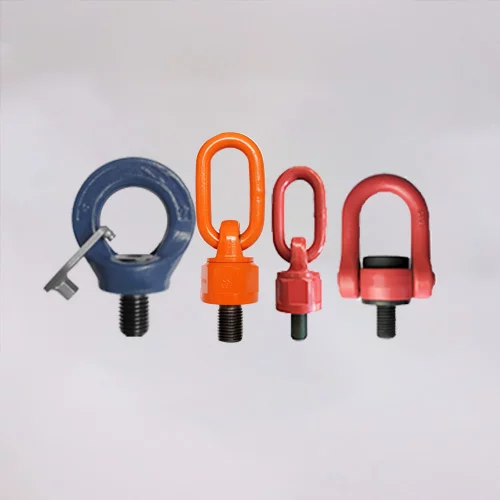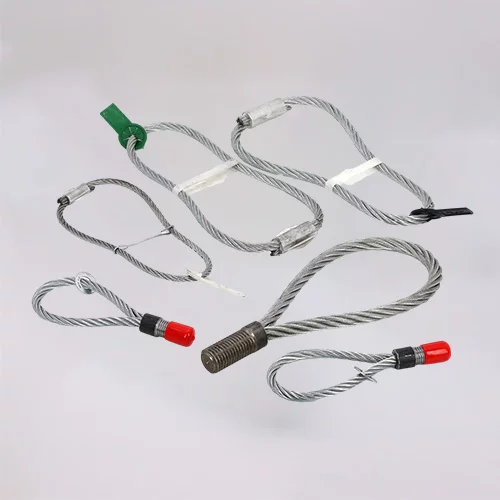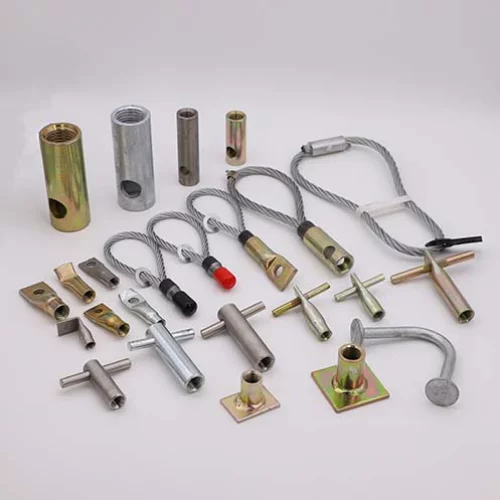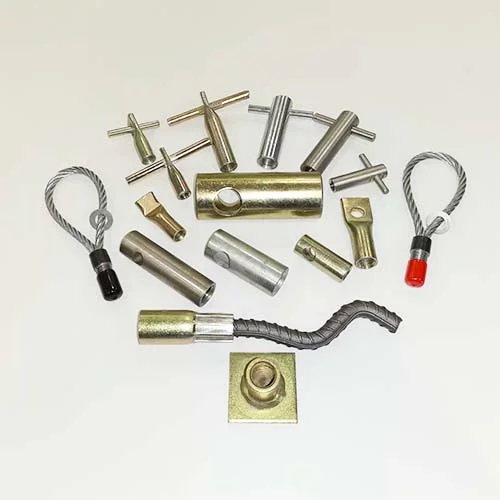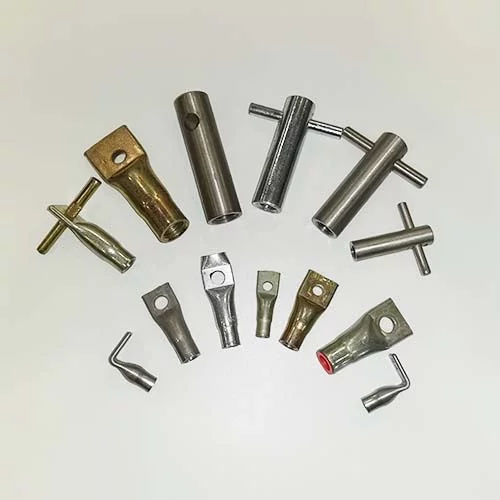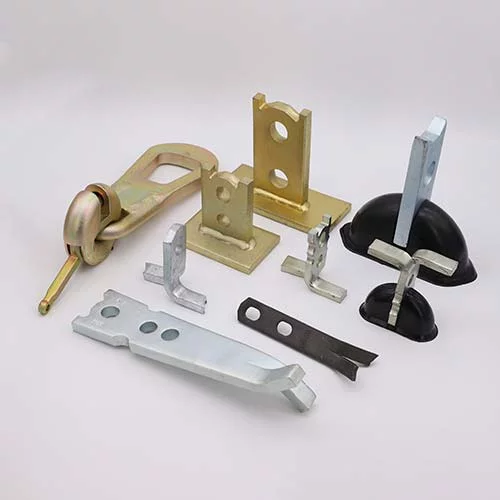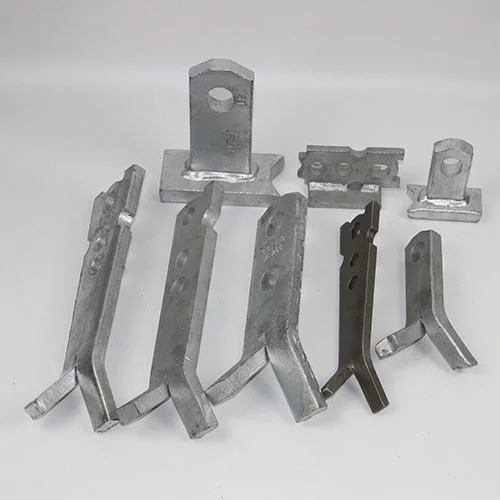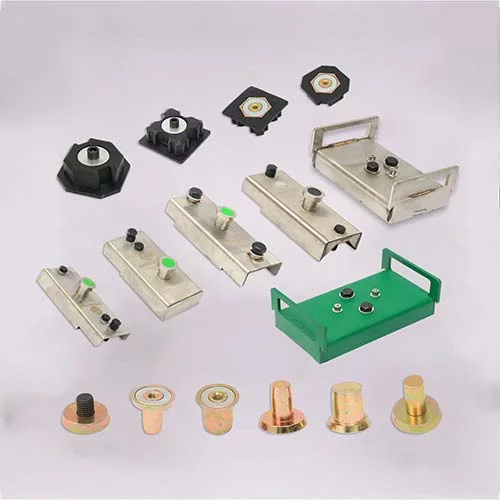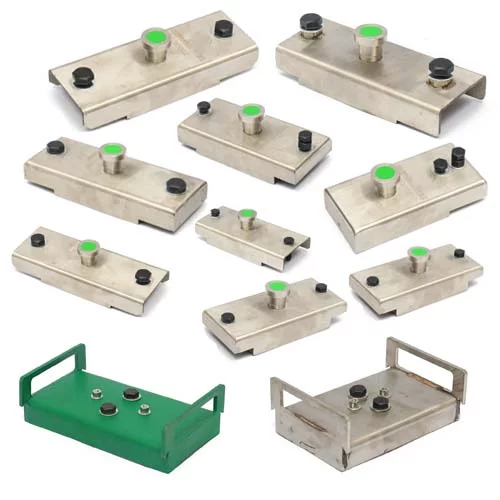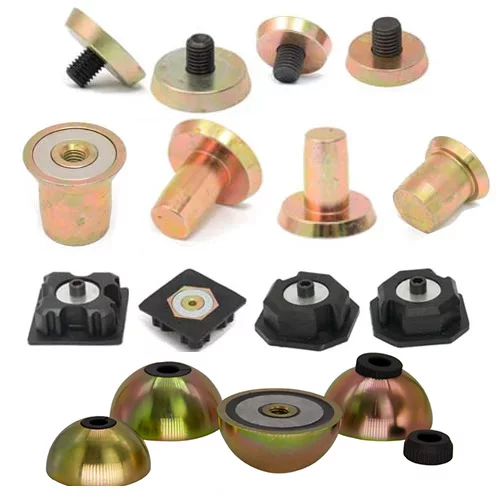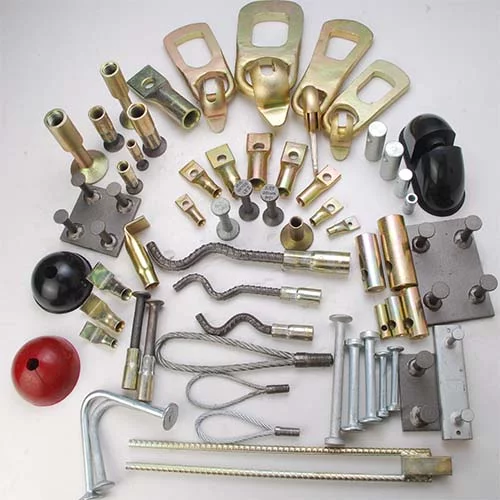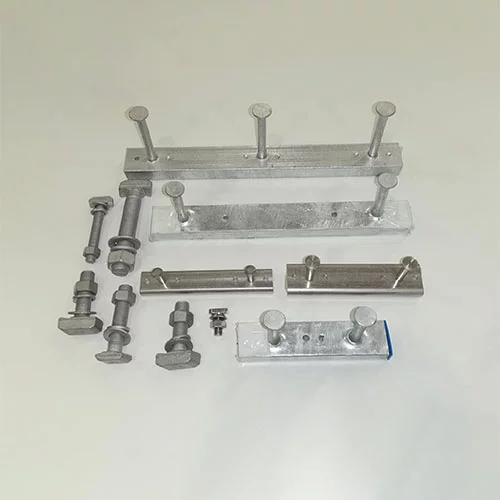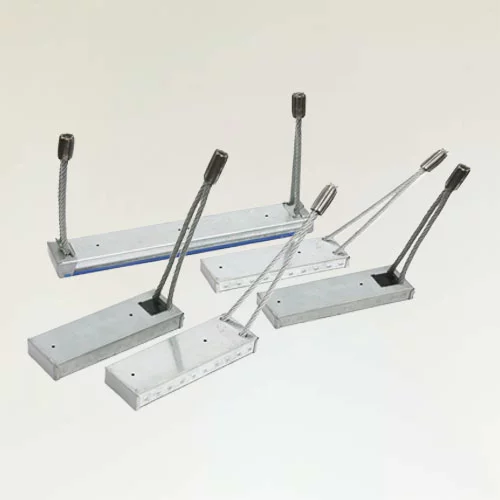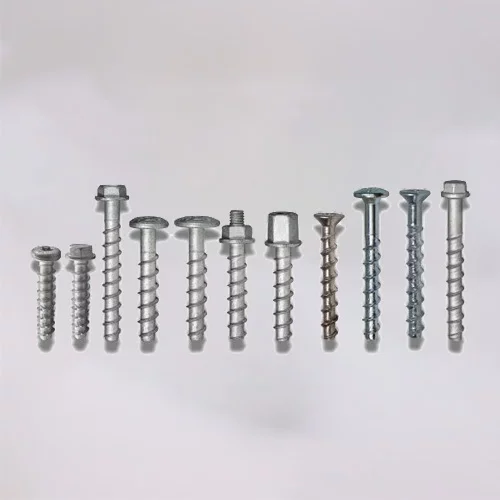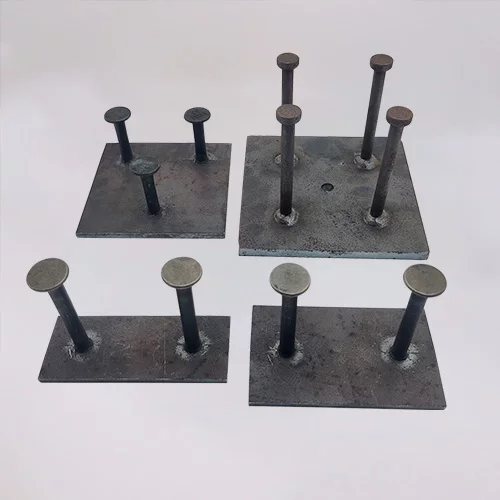Application Environment For Precast Concrete Accessories

Precast concrete accessories play a critical role in ensuring the structural integrity, safety, and efficiency of precast elements from fabrication to installation. As precast construction continues to gain popularity for its quality control, speed of assembly, and cost-effectiveness, selecting the appropriate accessories becomes paramount. This article explores various application environments for common precast concrete accessories, examines material and surface treatment considerations, and highlights best practices for installation and maintenance. By understanding these factors, project teams can optimize the performance and longevity of precast structures. Finally, we introduce HULK Metal’s comprehensive range of precast accessories and services designed to meet diverse project requirements.
Understanding Precast Concrete Accessories
Precast concrete accessories refer to embedded or cast-in items that facilitate handling, connection, and functionality of precast panels and components. Common types include lifting anchors and lifting loops, concrete inserts and embeds, couplers, connection hardware, and positioning devices such as shuttering magnets.
Lifting Anchors and Lifting Loops
These components are embedded into panels to enable safe lifting and transportation. They are typically forged or cast steel elements designed to accommodate specific load capacities and lifting points. Quality criteria include load rating, fatigue resistance, and weld integrity for surety during repeated lifts.
Concrete Inserts and Embeds
Inserts provide attachment points for architectural elements (e.g., window frames, mechanical fixtures) and structural connections (e.g., shear keys, grout tubes). They are often galvanized or epoxy-coated to resist corrosion within concrete. Inserts must offer sufficient pull-out strength and maintain bond compatibility with concrete.
Couplers and Connection Hardware
Couplers join reinforcing bars between panels or connect panels to cast-in-place elements. Threaded couplers, swaged sleeves, or grouted couplers are selected based on required tensile and shear performance. Connection hardware also includes anchor plates, brackets, and interlocking elements to ensure continuity under load.
Shuttering Magnets and Positioning Devices
Shuttering magnets temporarily hold formwork components or gaskets in place during casting. They reduce labor and improve alignment accuracy. Positioning devices, such as spacers or leveling inserts, maintain precise tolerances for panel thickness and embed placement.
Designers must consider load capacity, corrosion resistance, embedment depth, and compatibility with reinforcement layout. Accessories should be certified in accordance with relevant standards (e.g., EN 1090, ACI 318) and undergo rigorous testing, such as pull-out or fatigue tests, to verify performance.
Factory Production Environment
In a controlled precast manufacturing facility, accessories ensure panels are produced efficiently and safely. Proper selection and handling within the factory context contributes to consistent quality and streamlined workflow.
Climate Control and Indoor Conditions
Consistent temperature and humidity are essential for proper concrete curing and preventing early-age cracking. Accessories should be stored in a clean, dry environment to avoid premature corrosion or deformation. Dust and debris control in casting bays reduces contamination risk, particularly for embeds that must bond tightly with concrete.
Material Handling and Lifting Requirements
Precast panels often weigh several tons. Lifting anchors—such as single-point or multi-point devices—are engineered to distribute load evenly and reduce stress concentrations. Choosing anchors with safety factors exceeding anticipated loads adds a margin of security. Shuttering magnets offer quick, reusable attachment of formwork, speeding up mold preparation between cycles.
Quality Assurance and Testing
Non-destructive testing (NDT) methods, such as magnetic particle inspection or ultrasonic testing, verify the integrity of welds and forged components. Pull-out tests simulate lifting forces to ensure anchors meet design criteria. A routine inspection schedule helps catch issues, such as misaligned embeds, before casting begins. Certified welding procedures (e.g., ISO 9001 welding documentation) guarantee consistent mechanical properties of embedded accessories.
On-Site Installation Environment
Once precast elements arrive at the construction site, accessories facilitate safe handling, alignment, and connection under variable conditions. Understanding site-specific factors ensures smooth, on-time installation.
Construction Site Variables
Outdoor sites confront weather challenges—rain, high humidity, freeze-thaw cycles, and UV exposure—that can degrade exposed accessories. Temporary wind loads during installation demand additional bracing or strong lifting hardware. In seismically active regions, dynamic forces require accessories with ductile properties capable of sustaining shock loads without brittle failure.
Accessory Selection for Site Conditions
Hot-dip galvanized or stainless-steel anchors exhibit superior corrosion resistance, particularly in humid or coastal environments. Adjustable lifting loops accommodate uneven terrain or when crane pick points are limited. Accessories intended for seismic zones often feature energy-dissipating designs, such as ductile couplers that yield under high loads to prevent catastrophic failure.
Installation Best Practices
Embedding depth and concrete cover must meet design specifications to protect accessories from environmental exposure. Bolted or threaded inserts require precise torque control to ensure reliable connections. Alignment and tolerance guidelines specify permissible deviations; panels misaligned by more than a few millimeters can create stress concentrations or aesthetic defects. Using laser-guided surveying equipment ensures accurate placement of leveling inserts and couplers.
Residential Building Applications
Precast solutions have become prevalent in residential construction due to rapid assembly, reduced onsite labor, and durability. Accessories selected for residential projects balance performance with cost-effectiveness and aesthetic considerations.
Low-Rise Housing and Townhomes
In low-rise residential projects, simple lifting anchors and flush inserts suffice for panels weighing up to a few tons. Flush embeds allow for seamless finishes on interior walls or facades. For utility penetrations—such as plumbing or electrical conduits—inserts must maintain watertight seals to prevent moisture infiltration. Accessories are often zinc-plated or galvanized for moderate corrosion protection.
Mid- to High-Rise Apartments
As building heights increase, panel loads grow significantly. Multi-point lifting anchors rated for higher capacities become standard. Connection hardware may include fire-rated embeds to ensure structural integrity under high-temperature exposure. Mechanical and electrical embeds—such as conduit clips or anchor plates—must align with MEP (mechanical, electrical, and plumbing) layouts to simplify post-installation hookups. Compliance with local building codes ensures safety for occupants and firefighters.
Aesthetic Considerations
Exposed hardware can detract from architectural finishes. Concealed inserts and anchors designed for minimal visibility maintain the intended aesthetic. Accessories with a paintable or plasterable finish allow for seamless integration with exterior cladding. Project teams coordinate embed locations early during design to avoid conflict with finishes or fixture attachments.
Commercial and Office Structures
Commercial buildings often require larger panels, specialized connections, and higher performance criteria for insulation, aesthetics, and load-bearing capacity.
Large-Span Panels and Curtain Walls
Curtain wall systems necessitate concealed anchors that transfer gravity and lateral loads into the structure. Heavy-duty lifting anchors rated for higher safety factors (typically 2.5 to 3 times the working load limit) accommodate larger panel sizes. Connectors might also integrate thermal breaks to prevent thermal bridging between exterior panels and interior finishes. Acoustic insulation inserts reduce noise transmission in office spaces.
Façade Attachments and Decorative Elements
Shuttering magnets enable precise alignment of architectural panels, especially when tolerances are tight for decorative joints or reveal lines. Concealed embeds—such as slotted channels or welded studs—facilitate attachment of secondary framing and curtain wall mullions without visible fasteners. These connectors often feature epoxy or powder-coated finishes to resist harsh weather and maintain aesthetic quality over time.
Logistics and Scheduling
Just-in-time delivery of precast units minimizes on-site storage requirements in urban environments where space is limited. Accessories designed for quick disconnect—like snap-off lifting heads—simplify the removal of anchors after installation, reducing post-installation cleanup. Staging yards require adequate protection (e.g., covered areas) to safeguard delivered panels from weather and vandalism.
Infrastructure Projects (Bridges, Tunnels, Parking Garages)
Infrastructure applications impose stricter requirements for durability, load capacity, and environmental resilience. Accessories here often differ significantly from those used in building constructions.
Bridge Girders, Deck Slabs, and Barrier Walls
Precast bridge components demand lifting saddles and clamps engineered for long, narrow elements. Accessories must account for eccentric lifting forces and potential dynamic loads during placement. Where embedded steel connects to reinforcing bars or cast-in-place members, galvanic separation washers prevent galvanic corrosion between dissimilar metals in high-moisture environments.
Tunnel Segments and Precast Linings
Tunnel construction relies on segmental precast linings installed under high ground pressure. Seismic-resistant couplers maintain joint integrity during ground movement, while gasketed inserts or embedded drainage outlets ensure water management and waterproofing. Accessories here often include corrosion-resistant coatings or materials—such as duplex stainless steel—to withstand underground moisture and chemical exposure.
Parking Structures
In parking garages, repetitive vehicular loads and exposure to de-icing salts accelerate corrosion. Anchors and embeds with hot-dip galvanizing or epoxy coatings offer essential protection. Load-bearing criteria for floor panels include live load requirements for heavy vehicles; hence, embedded shear connectors and dowel bars need robust mechanical interlocks to maintain composite action with cast-in-place slabs or topping layers.
Industrial and Agricultural Facilities
Industrial and agricultural buildings present unique challenges, including heavy machinery loads, chemical exposure, and hygiene requirements. Precast accessories must address these conditions.
Heavy-Duty Floor Slabs and Mezzanine Panels
Accessories such as lifting hooks and weld-on inserts permit the use of overhead cranes for the installation of super-heavy panels. Integration of dowel bars and shear connectors facilitates composite slab action when installing topping slabs to support forklifts or conveyors. Embeds for embedded rail systems—used by automated cranes—require precise placement and alignment to function correctly.
Silos, Bins, and Retaining Walls
In grain storage or chemical processing facilities, acids, fertilizers, or grain dust create aggressive environments. Accessories must be acid-resistant—often made from stainless steel 304 or 316—or coated with specialized epoxy linings. Telescoping lifting loops, which can be adjusted to fit deep formwork, simplify casting of tall silos and vertical panels. Drainage outlet inserts embedded at the base of retaining walls ensure proper water management and prevent hydrostatic pressure buildup.
Farm Buildings and Livestock Shelters
Moisture, ammonia, and bacterial activity can corrode unprotected steel. Simple, cost-effective accessories—such as galvanized anchors and plating—serve low-to-medium load panels in barns, feed storage, and shelters. Hygienic surface treatments (e.g., epoxy mortar coatings) on inserts prevent bacteria accumulation and facilitate cleaning. Embedded floor drains and utility anchors streamline the installation of water lines or drain pipes.
Special Environments and Extreme Conditions
Certain projects operate in environments that push accessory performance to its limits—coastal, cold‐climate, or high‐seismic regions.
Coastal and Marine Applications
Marine environments expose accessories to chloride-laden air and saltwater, accelerating corrosion. Accessories should be manufactured from marine-grade stainless steel (e.g., 316L or duplex grades) or hot-dip galvanized to a minimum thickness (e.g., 85–100 microns). Cathodic protection measures, such as sacrificial anodes, may accompany sensitive accessories to prolong life. Designers also specify epoxy-coated rebar and embeds to reduce maintenance.
Cold‐Climate Installations
Freeze-thaw cycles fracture concrete unless accessories avoid moisture entrapment. Freeze-thaw resistant concrete embeds are often combined with insulation break connectors to mitigate thermal bridging and prevent ice formation around embeds. Accessories receive additional epoxy coatings to block moisture ingress, preventing corrosion under cyclic freeze-thaw.
High‐Seismic Zones
In earthquake-prone regions, accessories must be ductile and energy-absorbing. Lifting anchors with forged, tapered sections that yield under extreme loads prevent sudden failure. Seismic joint accessories—such as post-tensioning pockets and flexible couplers—allow panels to move relative to each other without fracturing. Testing to ANSI/AISC 341 or Eurocode 8 ensures compliance with seismic performance requirements.
Material and Surface Treatment Considerations
Selecting the correct base material and surface treatment enhances accessory performance across diverse environments.
Common Base Materials
Carbon steel is cost-effective for moderate applications but requires protective coatings for corrosion resistance. Alloy steels (e.g., 4140 HT) offer higher strength and toughness, suitable for heavy-duty anchors. Stainless steel (304 or 316) provides superior corrosion resistance, especially in marine or chemical environments, but at a higher cost. Designers weigh cost vs. performance based on project demands.
Surface Protection Methods
Hot-Dip Galvanizing: Provides a thick zinc coating (typically 85–100 microns), ideal for moderate to aggressive environments. Offers sacrificial protection where the zinc corrodes before the underlying steel.
Epoxy Powder Coating: Creates a uniform, impermeable barrier resistant to moisture and chemicals; common in industrial settings.
Zinc Plating: Thinner than galvanizing (5–15 microns), suitable for indoor or lightly corrosive applications.
Selection depends on environment: saltwater-exposed docks demand thicker galvanizing or stainless steel, whereas interior panel accessories might suffice with zinc plating.
Compatibility with Concrete Mixtures
Accessories must bond well with concrete; epoxy-coated embeds sometimes suffer bond loss if coatings are too thick. Alkali-resistant inserts are essential when using concrete containing accelerators or supplementary cementitious materials that raise pH. Manufacturers often supply test reports demonstrating pull-out strength with specific concrete mixes to verify performance.
Installation and Maintenance Best Practices
Proper handling, installation, and routine maintenance guarantee the long-term performance of precast accessories.
Handling and Storage
Accessories should be stored on pallets above ground, in a dry, covered area to prevent corrosion. Avoid stacking heavy items directly on top of lifting anchors or inserts to prevent deformation. Inventory management—using tagged lots—ensures traceability from fabrication through installation.
Installation Procedures
Use embedding templates or jigs during casting to maintain proper positioning. Controlled concrete pours—avoiding cold joints near embeds—ensure uniform consolidation around accessories. Threaded inserts require application of the manufacturer-specified torque to achieve rated capacity without stripping threads. For welding, certified welders must follow prequalified procedures to maintain accessory integrity.
Periodic Inspection and Maintenance
Visual inspections at regular intervals detect surface damage, corrosion, or loose connections. In high-humidity or chemical environments, inspect galvanizing or coatings for blistering or chipping. Re‐torque checks on critical connection hardware, such as couplers and anchor plates, after initial load application, verify that no loosening has occurred. A documented maintenance log tracks inspections, findings, and corrective actions.
Case Studies: Successful Application Examples
Residential High‐Rise Using Post‐Tensioned Precast Panels
In a 20‐story apartment complex in a dense urban center, post‐tensioned precast panels reduced erection time by 30% compared to cast‐in‐place. Multi‐point lifting anchors rated for 15 kN per point facilitated the safe placement of panels weighing up to 12 tons. Concealed inserts allowed integration of curtain wall mullions without visible hardware. Shuttering magnets ensured rapid mold changes and precise alignment of architectural reveals.
Bridge Construction with Segmental Precast Approach
A highway overpass utilized segmental precast girders cast with specialized lifting saddles. Each segment measured 3 m in length and weighed 25 tons. Seismic‐resistant ductile couplers connected longitudinal reinforcement across joints. Embedded drainage outlets and waterproofing inserts managed stormwater infiltration. Construction schedule accelerated by 40%, as segments were erected overnight to minimize traffic disruptions.
Industrial Warehouse Expansion
An automotive parts manufacturer expanded its facility with precast floor panels featuring integrated embedded rails for automated overhead cranes. Heavy‐duty weld‐on inserts positioned within panels supported rail brackets and eliminated the need for post‐installation drilling. Acid‐resistant epoxy coatings on floor‐drain inserts provided durability against chemical spills. The project achieved ISO 9001 quality certification for its controlled manufacturing and installation protocols.
Conclusion and Introduction to HULK Metal
Selecting the correct precast concrete accessories is essential for achieving long‐term performance, safety, and cost efficiency across varied application environments—from residential and commercial buildings to infrastructure and industrial facilities. By considering factors such as material choice, surface treatment, environmental exposure, and installation best practices, project teams can mitigate risks and optimize their precast workflows.
About HULK Metal
HULK Metal specializes in providing engineered precast concrete accessories tailored to diverse project requirements. Our offerings include forging and heat‐treatment of lifting anchors, stainless and galvanized inserts for extreme environments, NDT‐certified couplers, and high‐strength shuttering magnets designed for rapid formwork changes. As an ISO 9001-accredited manufacturer, HULK Metal emphasizes rigorous quality control, conducting pull‐out, fatigue, and magnetic particle inspections to ensure every accessory meets or exceeds industry standards. Our in‐house surface treatment capabilities, including hot‐dip galvanizing and epoxy coating, deliver superior corrosion resistance for marine, cold‐climate, and industrial settings.
With a robust supply chain encompassing raw material procurement, forging, machining, and third‐party testing, HULK Metal ensures on‐time delivery and consistent product quality. Our technical support team collaborates with designers and contractors to recommend optimal accessory solutions, from specifying ductile couplers for seismic zones to developing custom embeds for complex MEP integrations. We offer comprehensive after-sales service—providing replacement, re‐galvanizing, and on‐site inspections—to maintain long‐term performance of precast assemblies.
For expert guidance on selecting and sourcing precast concrete accessories for your next project, contact HULK Metal. Our engineers are ready to assist with custom solutions, detailed technical data sheets, and competitive quotes. Request a consultation today to ensure your precast elements are equipped with the highest‐quality accessories for durable, safe, and efficient construction.
Article Navigation
PRECAST CONCRETE ACCESSORIES
Other Precast Concrete Accessories You Might Want to Know
You can click to learn more about HULK Metal precast concrete accessories such as lifting anchors, precast sockets, spread anchors, shuttering magnets, cast-in channels, wire loop boxes, and other precast concrete accessories you might want to know.
